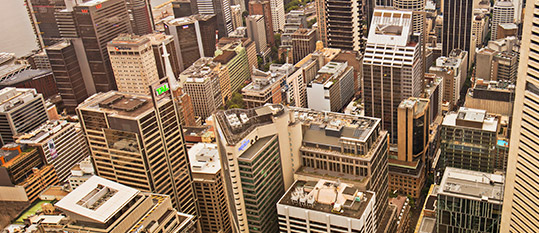The road to recovery for AREITS

The global recovery post the pandemic remains uncertain with the fallout from the US election, US fiscal cliff, Brexit, and a COVID-19 second wave sweeping through Europe. The picture in Australia, on the other hand, is more promising with case rates well down, restrictions easing, and hints of further fiscal stimulus on the cards, particularly for VIC. With this backdrop, the outlook for earnings and dividend recovery is strong. In fact, we have already seen an improvement with DPS (dividends per share) for the ASX 200 climbing 3.2% in September.
This bodes well for AREITs with attractive relative valuations (AREITs have underperformed the broader equities market by 9% for the year to October 2020), high yields (average yield gap of 330 basis points above 10-year bonds) and the re-opening upside catalyst.
Based on the quarterly updates, most REITs have reported an improvement in rent collections. For the office and industrial sectors, rental collection remains high at 80% and 90% respectively whilst the retail sector has seen an improvement of 60%-70% from the lows of 40%-50% in June 2020. Occupancy for industrials is strong at 95%, offices remain relatively resilient at 90%, and retail also is at 90% based on the stores open and trading (excluding VIC).
If capital flow is any indication, the Australian property market recorded a strong recovery in transaction levels with a total of $6.9bn of assets (mainly in office and logistics) transacted in the past 4 months on an average cap rate of 4.25%-5.5%. Quality assets are in high demand as return spreads are elevated and Australia is attracting good capital flows from offshore investors willing to take longer-term views.
The two key property sectors to benefit most through the re-opening of the economy are retail and office.
The main focus of retail is the stabilization of trading post the pandemic. Based on quarterly updates, rental collection has increased as mentioned above, however this figure varies significantly and can be inflated if they report based on i) net rent, which excludes amount waved/deferred, and ii) include cash collections from the prior quarter.
As the economy reopens, we are starting to see significant improvement in foot traffic (on average 95% excluding VIC and 90% including VIC). Despite the strong foot traffic, specialty sales were flat, whilst supermarkets remain strong with 5% growth.
We forecast stabilized net income for large discretionary malls to be down 20-30% due to a higher level of structural vacancies, the lack of rental assistance for categories still to be impacted by social distancing (e.g. cinemas, gyms, restaurants, and bars) as well as a downward reversion in rents of ~10%.
For office, there has been a great debate within the property market as to the impact of working from home (WFH). In one camp – a strong rebound in tenant demand is expected in FY23/FY24 as the WFH movement reverses driven by i) cultural benefits of working in an office environment becoming better understood, and ii) a need to be ‘seen’ in the office. While the opposite camp argues for i) more flexibility (3 days in the office and 2 days from home), which will drive down occupancy costs, and ii) decentralisation away from CBDs, leading to a reduction in commute time & demand for more cost-effective space.
We are more towards the second camp – that the new normal will be more flexible working conditions, allowing employees to choose when they want to come to the office and what works best for them. Rationalization of office space is most likely to take place where organizations employ staff in back-office roles.
Key industry sectors in this category include:
- Consumer banks
- Accountancy
- Telecommunications and IT
- Mining/engineering
- Utilities and energy companies
- Government
On top of the structural shift of WFH, the office sector is cyclical and will go through a period of subdued demand as the unemployment rate rises above 10%. This has already been evidenced by Sydney CBD vacancy increasing from 5% to 7.5% over the last six months to June 2020. We expect valuations to drop by 10%-15% but to be cushioned by capital flows into high-quality assets.
Importantly, Dexus Group (DXS) indicated in their quarterly update that the demand outlook for office had improved from a few months ago, driven by employment in white-collar industries. Despite this, the group expects a period of subdued demand in the short term given business confidence and job ads remain low.
Overall, we believe the road to recovery in Australia is strong and continues to support AREITs that have high-quality assets coupled with good management and a strong balance sheet to take advantage of the growth opportunities through either acquisitions or developments.
Amy Pham is the portfolio manager of the Pengana High Conviction Property Securities Fund, and has over 20 years of property funds management experience.

